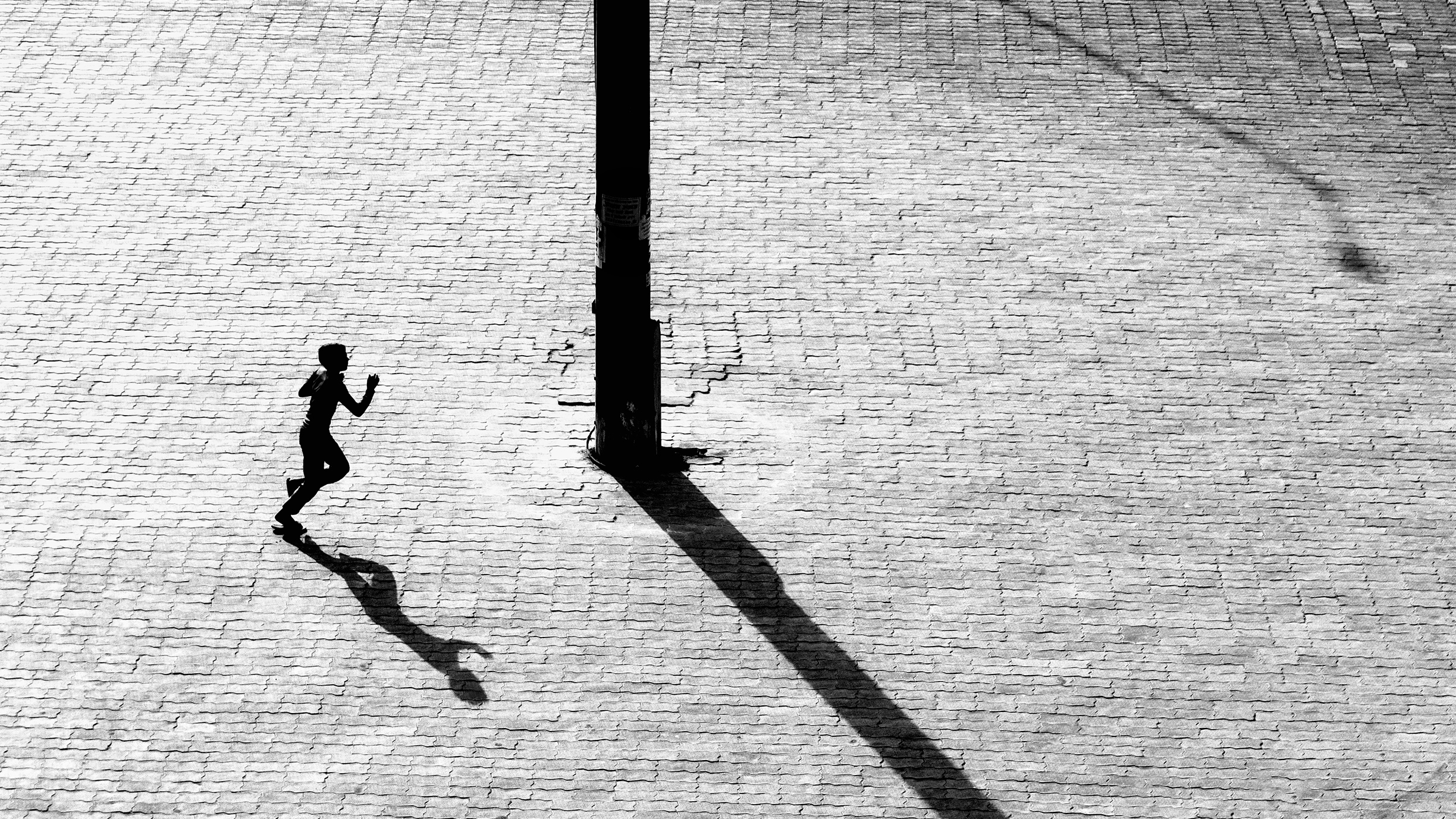
Divyanshu Verma is known for his ability to capture the beauty in the mundane. He has a unique talent for finding extraordinary and creative elements in the ordinary, daily scenes around us.
He shared insights on the technique he used to capture his image "Run Free", and why it works..
1. High angle perspective
This picture is a perfect example of how composition and perspective can make or break an image. With a clear vision in mind, Divyanshu experimented with various angles but he wasn’t satisfied with the initial results. “I wanted to compose and balance this frame properly, but the challenge was to find the right spot to achieve this composition. In the end, I had to go to the top of the wall of the temple to take the shot,” he explains. By choosing a high angle and a top-down perspective, Divyanshu could capture the scene while controlling the shape of the shadows. The resulting shot is a harmonious and captivating frame with strong visual language.
2. Defined shadows
Divyanshu created this image by combining the harsh glow of the afternoon sun with the long shadows of the subjects in the frame. This resulted in a high-contrast scene with hard shadows and a silhouette of a person. “The shadows make this scene, but to get the correct placement, I observed this place for a while at multiple times of the day,” he says. “I love how the diagonal lines are used here in the form of shadows. While I was capturing the scene, this kid showed up, creating an interesting shadow that added a surprising element. His silhouette gives the shot an extra layer of interest,” Divyanshu adds.
3. Negative space
“Negative space is one of the most powerful tools of composition as it can be used to draw attention directly towards the subject,” says Divyanshu. While it may seem easy to simplify the frame, it’s important to strike a balance between the input of negative space and image elements. “The effect of negative space can create a positive impact on the viewers because it gives the image room to breathe and helps them direct their attention on the subject while easily understanding the story behind the photo,” he says. Negative space is frequently used in photographic genres such as minimalism and black-and-white photography, as it adds dramatic impact to the photo.
4. Monochrome magic
Converting an image into black and white is a powerful technique that effectively eliminates visual distractions, simplifies the composition and creates a strong foundation for visual storytelling. “By doing this, the viewer’s focus is directed towards the shapes, textures and overall tonality within the image,” Divyanshu explains. “It also enhances the overall impact and visual clarity of the subject matter and that’s the reason I decided to convert this image to mono.” Divyanshu’s use of this technique has resulted in a more dramatic and visually striking frame, with bold contrast and captivating textures that convey a more moody look.
Tech details
Camera: Canon EOS 500D
Lens: Canon EF-S 18-55mm f/3.5-5.6 IS II
Aperture: f/9
Shutter speed: 1/1250 sec
ISO: 800
Others in the Why Shots Work series
- “I used natural lighting to illuminate my subject"
- My photo portrait "unfolds like a clandestine glimpse through distant trees"
- I get inspired by the charm of minimalistic landscape photography
- "By zooming in on these tiny creatures, I hope to spark curiosity"
- Urban street photographer reveals his candid capture secrets
- Photographer tells story of getting up close and personal with a python
- Discover four key elements that make this stunning photo a success
- The 4 photographic decisions that take this motorsport shot to the next level
- Photographer tells story of his amazing shot of wallabies fighting







